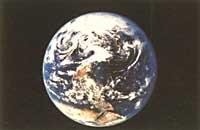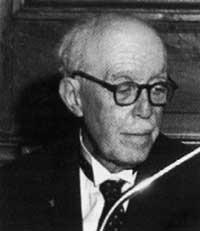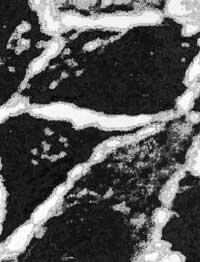Arthur Holly Compton
1994/04/01 Azkune Mendia, Iñaki - Elhuyar Fundazioa Iturria: Elhuyar aldizkaria
This American physicist was born in the Wooster of Ohio on September 10, 1892. His father was a Presbyterian pastor and dean of the local school. There Compton achieved the graduate in 1913 and three years later, in 1916, the doctorate in Princenton.
For a year he taught physics at Minesota University and then worked in Pittsburgh at Westinghouse Lamp Company. In 1919 he travelled to England for a year to study under the direction of Rutherford at Cambridge University. In 1920 he was appointed head of the Department of Physics at the University of Washington in Saint Louis of Missouri and in 1923 he moved to the University of Chicago.
Compton rehearsed Barkla on the dispersion of matter in X-rays. Barkla analyzed the dispersion of X-rays heavily, but Compton could accurately measure the wavelength of X-rays that depended on Bragg parent-child techniques and dispersed.
When he did this work in 1923, scattering it, he observed that the wavelength of some x-rays increased. This phenomenon was called the Compton effect, in honor of the discoverer, and years later Ran discovered something similar in visible light.
Compton explained this effect: a photon collided with an electron and the electron took part of the photon energy, thus increasing the wavelength. Therefore, it seemed that the photon acted as a particle, so Newton, as postulate, began to consider again the corpus character of light. But the puzzle character of light was complicated by the theories of Planck and Einstein and the XIX. In the 18th century the wave phenomena established by Young, Maxwell and Fresnel were not clarified.
However, in Compton the most important thing was to highlight that electromagnetic radiation has a wave and corpus character. De Broglie, for his part, showed that this theory could also be applied to simple particles, such as electrons. The simultaneous presence of waves and corpuscles surprised some scientists and was considered a paradox. But it is not paradoxical that photons or electrons have more than one side.
The year 1927 was awarded the Nobel Prize Compton for finding its effect, which he received together with Wilson.
Since 1930, Compton took over the cosmic rays. According to Milikan, cosmic rays, like gamma rays, were electromagnetic, but more energetic. If so, cosmic rays should not be affected by the Earth's magnetic field and fall equal to all parts of the Earth's surface. However, if cosmic rays were charged particles, the Earth's magnetic field should be diverted and detected more frequently around the Earth's magnetic poles.
Compton toured the world by making his measurements and showed that latitude had its influence. Therefore, cosmic rays should be partially charged.
He was one of the most important scientists of the Compton Manhattan project during World War II. According to this project, an atomic bomb was manufactured, which then exploded in Hiroshima and Nagasaki.
At the end of the war he returned to Washington University. He was rector until March 15, 1962 in Berkeley, California.

Gai honi buruzko eduki gehiago
Elhuyarrek garatutako teknologia






